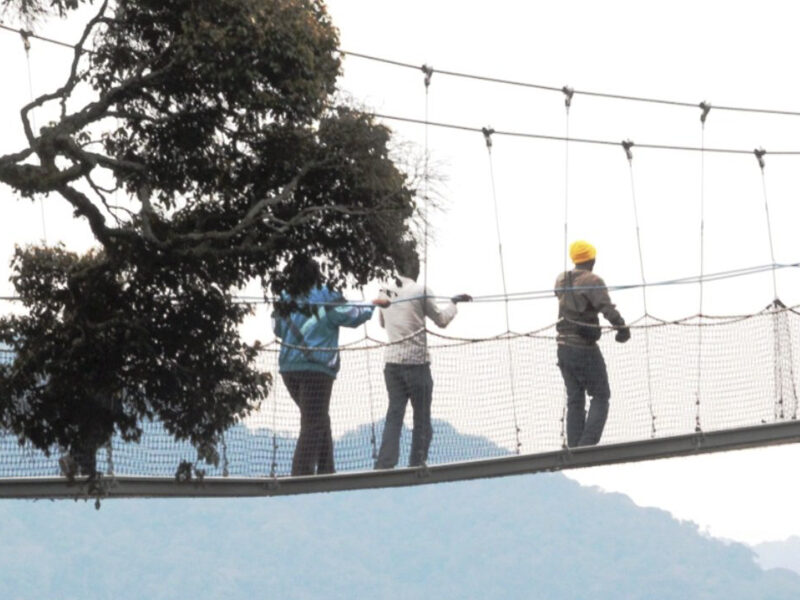17 Days Uganda Butterfly Tour
5000$
per personMost butterfly species in Uganda and generally in East Africa are day-flying so they regularly attract attention.
Most butterfly species in Uganda and generally in East Africa are day-flying so they regularly attract attention. The diverse patterns formed by their brightly coloured wings and their erratic yet graceful flight have made butterfly watching an interesting tourist activity. Some migrate over long distances, across a number of regions. Culturally, butterflies are a popular motif, design and decoration in the visual and literary arts. Scales on the wing give the colours. They feed primarily on nectar from flowers thus many of the species are common in the tropical rainforests of Uganda, such as Mabira, Bwindi, Mgahinga and Kibale Forests.
By deriving nourishment from pollen, tree sap, rotting fruit, dung, and dissolved minerals in wet sand or dirt Butterflies are important as pollinators for some species of plants although in general they do not carry as much pollen load as the birds. They are however capable of moving pollen over greater distances.
See various species of butterflies, including buacraeaphasalus, buanthenelarydas, bubebariachriemhilda, bubelenoistheora, bubelenoistheora, bubelenoisthysa, bucatunacrithea, among others. Track gorillas in Bwindi and see other wildlife such as chimpanzee, lion, buffalo, hippo in Queen Elizabeth Park. On the tour, travellers have an opportunity to stay in either low-budget accommodations, mid-range or top-of-the-range properties, for each of these service levels, there are price variations. Please contact us for details.
-
DepartureTour startTour starts from: “Entebbe” at 10:00 a.m. every Saturdays from: Kampala, Entebbe, Uganda
-
Departure TimePlease arrive by 9:15 AM for a prompt departure at 9:30 AM.
-
Return TimeApproximately 8:30 PM.
-
Dress CodeCasual. Comfortable athletic clothing, hiking shoes, hat, light jacket.
-
Include
Day 1: Arrival
Day 2: Butterfly watching at Mabira Forest
Day 3: Mabamba Swamp
Day 4: Gorilla trekking.
Day 5: Bwindi
Day 6: Bwindi
Day 7: Transfer to Queen Elizabeth National Park.
Day 8: Whole day butterfly watching in the forest.
Day 9: Whole day butterfly watching in the forest.
Day 10: Transfer to Kabale
Day 11: Kibale Forest
Day 12: Whole day in the forest.
Day 13: Transfer to Budongo.
Day 14: Butterfly watching in the forest.
Day 15: Butterfly watching in the forest.
Day 16: Transfer to Kampala.
Day 17: Departure.
Tour Location
On this tour, you will be able to see the Bare-faced Go-away-bird, Wattled Lapwing and many more
-
Uganda's history is marked by pre-colonial kingdoms, British colonial rule, and post-independence challenges. The country's borders were drawn arbitrarily in the late 19th century, encompassing diverse societies. In 1894, Uganda became a British protectorate, and it gained independence on October 9, 1962. Following independence, Uganda faced a period of political instability, including civil wars and military coups.Pre-Colonial Period:
- Uganda's early history is characterized by the movement of various groups of cultivators and herders, leading to diverse languages and cultures.
- The region was home to a variety of centralized kingdoms, including Buganda, Bunyoro, and others, as well as more decentralized Nilotic and Sudanic peoples.
- Evidence of human activity in Uganda dates back to at least 50,000 years ago, with Acheulean tools found along the Kagera River valley.
British Colonial Period (1894-1962):- In 1894, Uganda was declared a British protectorate.
- The British administration extended control beyond Buganda by signing treaties with other kingdoms like Toro, Ankole, and Bunyoro.
- Uganda was never fully colonized; instead, it developed a system of internal self-government through a Legislative and Executive Council.
- The British influence was strong in the late 19th century, particularly with the arrival of missionaries from the British Missionary Society and the French Roman Catholic White Fathers.
Independence and Post-Colonial Period (1962-Present):- Uganda gained independence on October 9, 1962, with Milton Obote as the first Prime Minister.
- The newly independent nation faced challenges, including civil wars and political instability, leading to a period of military coups and dictatorships.
- In 1995, a new constitution was adopted, establishing a non-party all-inclusive Movement System of government.
- In 2005, a referendum was held, resulting in a return to multi-party politics.
- Uganda has since made significant strides in restoring peace and rebuilding infrastructure, while also engaging in peacekeeping operations through the Uganda People's Defence Force.
Key Events and Figures:- Milton Obote: The first Prime Minister of Uganda, who played a key role in the independence movement and later served as President.
- Idi Amin: A military leader who seized power in 1971 and ruled Uganda for eight years, a period marked by human rights abuses and political instability.
- Yoweri Museveni: The current President of Uganda, who has been in power since 1986.
- Uganda's early history is characterized by the movement of various groups of cultivators and herders, leading to diverse languages and cultures.
Write a Review
A selection of Hotels and Lodges






